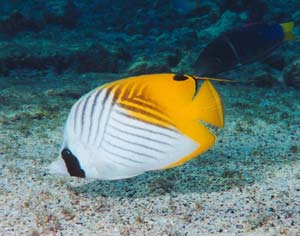U.S. President Bush has decided to designate a chain of islands in the northwestern Pacific as a national marine monument. This is a rare moment for President Bush.
 |
|
The Hawaiian archipelago is home to over 7,000 marine species and many shallow-water coral reefs (Photo: richard-seaman) |
In this instance, the U.S. leader, often criticized for his environmental policies, received enthusiastic support from environmentalists.
With this decision, Bush has established the largest marine protected area in the world.
During a ceremony at the White House, Bush signed legislation to designate the remote and uninhabited Hawaiian Islands, covering nearly 140,000 square miles, as a national marine monument, with fishing in the area set to decrease and eventually end within the next five years.
The waters surrounding the islands are home to 70% of the coral reefs that are close to the surface and over 7,000 marine species, of which up to a quarter are found only in this region.
Some unique species, including the white shark, green sea turtle, and Hawaiian monk seal, are currently at risk of extinction.


















































